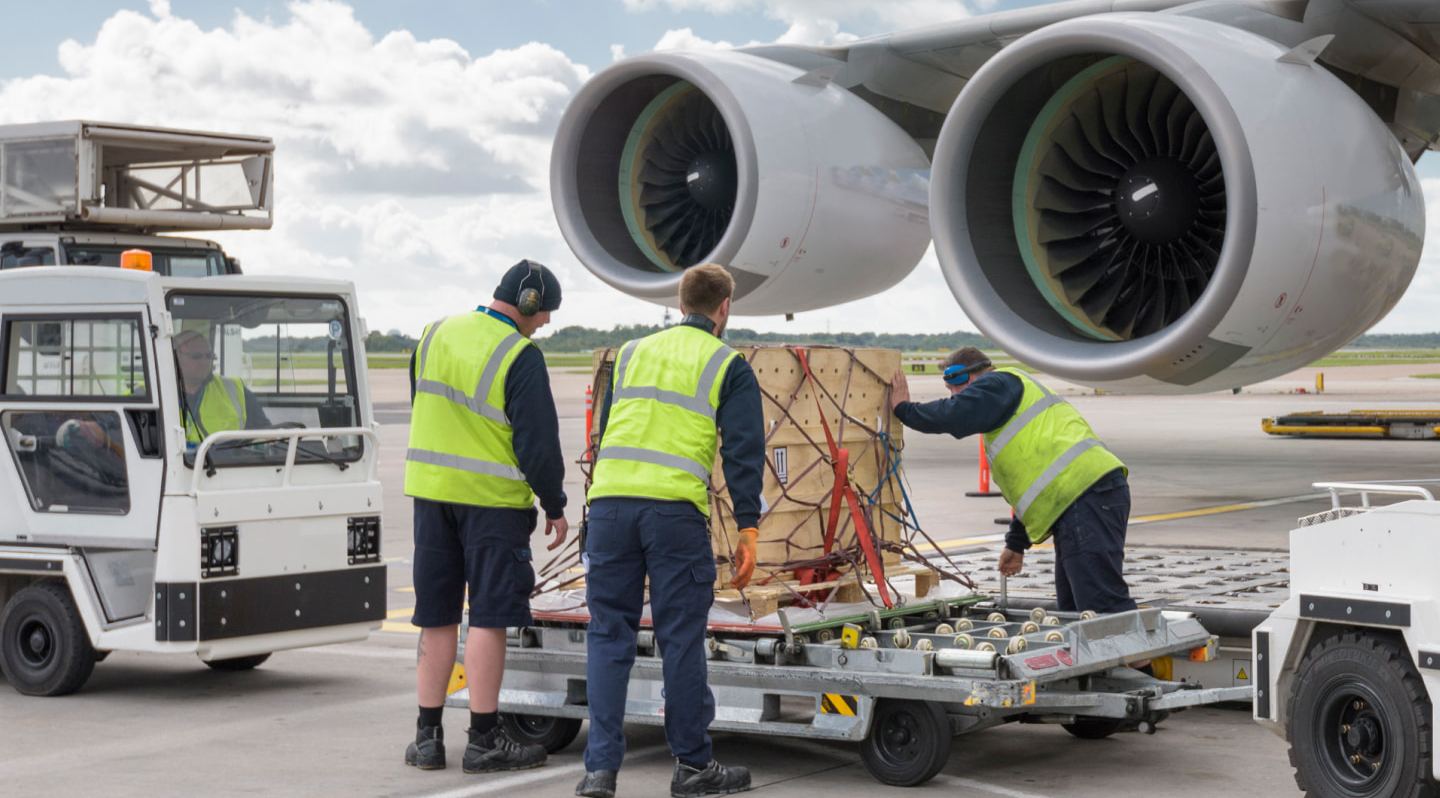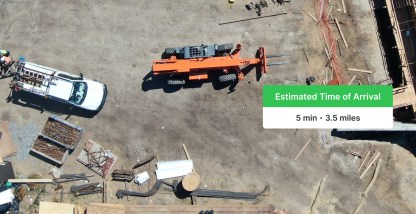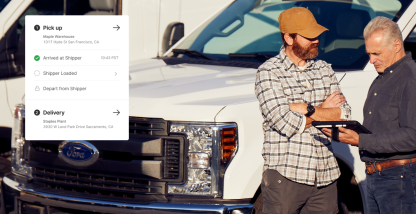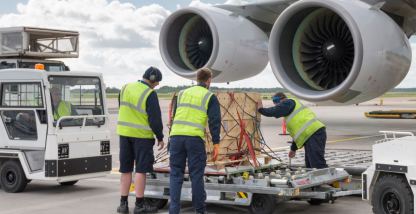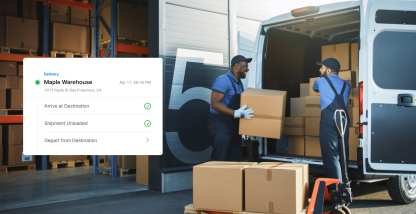The early 2020s have been volatile for the supply chain, leaving many wondering the best way to innovate and make improvements. In recent years, last-mile delivery has been a huge topic of interest for fleet managers looking to run their supply chains as efficiently as possible. Middle-mile logistics is now entering the conversation.
What is middle-mile logistics?
The transportation of goods between two facilities is an operation known as middle-mile logistics, and it’s a critical phase in the supply chain. Warehouses temporarily store products received from a supplier or production center. From these warehouses, goods are sent to a second facility that ships items to customers or stores.
After the manufacturing phase, products typically have long journeys before they’re finally in customers’ hands. These long journeys with multiple destinations require companies to take great care to ensure that shipments happen in the most economical and efficient way.
Why is middle-mile delivery important?
Any efficiency that companies can find in their operations could mean getting an important edge on competition. To maintain this competitive edge, companies must do what they can to make innovations to the middle-mile delivery process, even though innovations can be difficult in a well-established infrastructure. Focusing on middle-mile delivery is important because those companies that do start tackling this area now will be in a position to soar beyond competition.
To make meaningful improvements to middle-mile logistics, it’s important to understand the key differences between middle-mile and last-mile logistics.
Middle-mile vs. last-mile logistics
Last-mile logistics is widely known within the fleet management sector as an area of great importance. Making sure goods make it from distribution centers to customers is critical to customer satisfaction, especially now that so many consumers are routinely ordering goods to be delivered to their homes.
The importance of last-mile delivery grew along with the growing popularity of eCommerce, but middle-mile logistics hasn’t become a topic as widely discussed as last-mile logistics yet.
The most notable difference between middle-mile and last-mile logistics is what locations products get shipped to. Middle-mile delivery only has to do with the movement of goods between warehouses and distribution centers, but last-mile delivery refers to the shipment of goods from a logistics center to its end point, the customer or a retail location selling directly to consumers.
As far as logistical phases go, the last mile is the most complex. Moving goods from major distribution centers either directly to customers or to physical locations to be sold involves a much higher number of different destinations to coordinate and contend with. In contrast, middle-mile logistics only involves warehouses and established shipping points. This smaller network of locations, all established specifically to transport goods, allows warehouses and distribution centers to coordinate directly with carriers to optimize the shipping process.
For middle-mile delivery to be most successful, warehouses must be able to coordinate in the most efficient way possible. The amount of goods delivered has to match the amount of available storage space the facility has, and the goods must be delivered during a window that the facility is open for operations.
Those in charge of warehouse operations have to work to facilitate the pickup of goods from carriers, making adjustments in the operations according to the route and carrier delivering each shipment.
One other notable difference between middle-mile and last-mile delivery is in the size of the load being transported. Middle-mile delivery deals with much larger amounts of product, mainly shipped in bulk on pallets. Because last-mile deliveries are taking goods directly to stores or customers, they deal with much smaller loads that are usually in boxes or smaller packaging.
Advantages of mid-mile delivery
Making adjustments to mid-mile delivery practices uniquely positions companies to make significant improvements to their logistical operations. Because optimizing the last mile of deliveries has long been a point of focus, there is not nearly as much room left for innovation in that space. This scenario leaves mid-mile delivery as the area with the biggest room for growth and for companies to make adjustments that set them apart from the competition.
The main advantages of optimizing mid-mile delivery are:
- Cost reduction: Saving money is a huge advantage of mid-mile delivery. Optimizing the middle mile can often come easier to companies because they have control of both the beginning and end of the middle segment of the supply chain. Having this control helps companies reduce inefficiencies quicker, leading to a valuable reduction in costs.
- Competitive advantage: By making optimizations to mid-mile operations and generating cost savings, companies can pass these savings onto customers without suffering a lower profit margin. This will allow for a competitive edge in a market where many companies are looking to maintain margins without raising costs.
- Greater adaptability: Companies who own their own mid-mile operations see a smaller number of errors, better utilization of assets, and greater control. Taking greater control over mid-mile delivery operations puts companies in a better position to adapt to changes quickly and efficiently.
Common challenges associated with middle-mile transportation
Optimizing middle-mile delivery operations has big benefits for fleet management companies. There are a few common challenges associated with optimizing middle-mile transportation to be aware of:
- Lack of visibility in the warehouse: Warehouses can encounter issues like lost assets, late shipments, and inventory discrepancies. Losing inventory in the warehouse is costly, and getting a handle on this loss is one of the bigger challenges associated with optimizing middle-mile transportation.
- Optimizing routes between distribution centers: One aspect of the middle mile that companies must make sure to master early is finding the most efficient routes between distribution centers. Fleet management software with GPS tracking capabilities takes the guesswork out of finding the best routes, and is extremely beneficial when it comes to solving the challenge of optimizing routes.
- Getting technology into warehouses: Related to the challenge of lack of visibility in warehouses is the need for companies to modernize their warehouse operations and introduce reliable tracking technology to avoid lost assets and maintain better inventory records. A challenge for a lot of companies is making the transition to digital when they have long relied on manual tracking methods, but it’s a necessary transition for optimizing the middle mile.
Top tips to improve your middle-mile logistics
Improve your middle-mile logistics with these tips:
- Install a warehouse management system. Using an inventory management system in your warehouse provides you with much needed control over your inventory. It also allows you to arrange merchandise exactly according to your specifications.
- Refine your shipping and receiving process. Shipping and receiving must move as smoothly as possible to help improve your middle-mile logistics operation. Having efficient operations helps to increase the speed of transportation of goods between different warehouses.
- Use technology to plan better routes. Using a fleet management system with route planning capabilities is the best way to ensure vehicles are always taking the most efficient routes between warehouses.
How Motive optimizes your middle-mile logistics
Motive’s complete fleet management system helps you optimize delivery operations, including middle-mile delivery. Some of the top ways Motive can help streamline delivery operations include:
- Dispatch and workflow capabilities. Organize, assign, and optimize for on-time deliveries with Motive’s cloud-based dispatch management. With Motive’s dispatch and workflow capabilities, fleet managers can enjoy total visibility, better customer satisfaction, scalability, and increased vehicle utilization.
- Better fuel sustainability. Save on fuel and reduce your environmental impact using AI. Discover areas to optimize and identify opportunities to increase visibility into fuel trends and improve fuel economy with Motive Fuel Hub.
- Tools to streamline delivery operations. Motive’s delivery fleet management software provides all-in-one delivery route optimization, delivery vehicle tracking, and driver dispatch solutions. Fleet management companies can use Motive to satisfy customers and keep drivers happy with real-time insights and the transparency into deliveries your fleet needs to exceed expectations.
- The ability to implement and maintain green logistics practices. Motive’s fleet management software supports companies in running green logistics programs. Fleet managers can reduce fuel consumption and costs with GPS tracking and efficient route planning. Using the most efficient routes also reduces wear and tear on valuable fleet assets.
Learn how Motive can be your partner in streamlining and optimizing your middle-mile logistics. Request a demo today.




